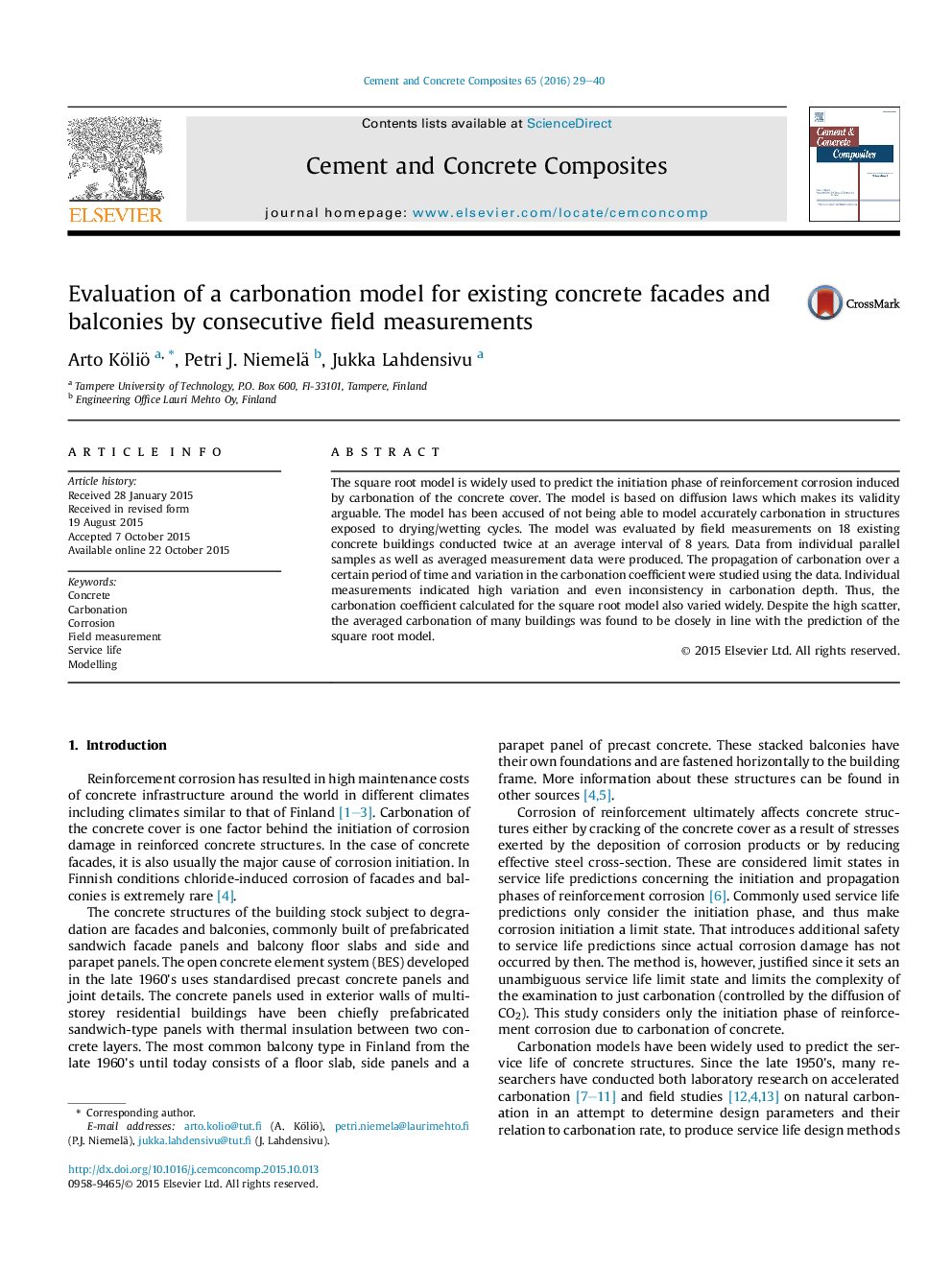| Article ID | Journal | Published Year | Pages | File Type |
|---|---|---|---|---|
| 1454407 | Cement and Concrete Composites | 2016 | 12 Pages |
The square root model is widely used to predict the initiation phase of reinforcement corrosion induced by carbonation of the concrete cover. The model is based on diffusion laws which makes its validity arguable. The model has been accused of not being able to model accurately carbonation in structures exposed to drying/wetting cycles. The model was evaluated by field measurements on 18 existing concrete buildings conducted twice at an average interval of 8 years. Data from individual parallel samples as well as averaged measurement data were produced. The propagation of carbonation over a certain period of time and variation in the carbonation coefficient were studied using the data. Individual measurements indicated high variation and even inconsistency in carbonation depth. Thus, the carbonation coefficient calculated for the square root model also varied widely. Despite the high scatter, the averaged carbonation of many buildings was found to be closely in line with the prediction of the square root model.
